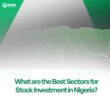With so many stocks, bonds, and mutual funds out there, it’s easy to get lost in the maze of choices. That’s why I want to introduce you to one of the most flexible, cost-effective, and accessible tools that can make a real difference in your portfolio: ETFs (Exchange-Traded Funds). ETFs can play a crucial role in your investment journey especially if you want to have a well-diversified portfolio.
By the end of this blog post, you’ll not only understand the role of ETFs in your portfolio, but you’ll also feel empowered to make smart, strategic choices that align with your financial goals.
What are ETFs?
An Exchange-Traded Fund (ETF) is a type of investment fund that holds a collection of securities—stocks, bonds, or other assets—and is traded on stock exchanges, much like individual stocks.
When you invest in an ETF, you essentially buy a small slice of a large basket of investments. For instance, if you purchase shares in an ETF that tracks the S&P 500 index, you own a piece of each company within that index.
One of the key features of ETFs is that they are traded on an exchange throughout the day, just like stocks. This means that their prices fluctuate as they are bought and sold in real time.
But what makes ETFs so appealing to investors like you and me? Let’s dig into their benefits.
The Benefits of ETFs in an Investment Portfolio
1. Diversification Made Easy
I’m sure you’ve heard the saying, “Don’t put all your eggs in one basket.” It applies perfectly to investing. The more diversified your investments, the more you spread out your risk. However, buying individual stocks to achieve diversification might seem difficult but ETFs can solve this problem for you.
With just one ETF, you can invest in hundreds or even thousands of different assets. For example, a single ETF might give you exposure to large-cap U.S. stocks, international markets, or bonds—all in one fund.
Diversification through ETFs allows you to reduce the risk of your portfolio being heavily impacted by the performance of a single asset. Whether you’re after broad market exposure or specific sectors like technology, healthcare, or clean energy, ETFs provide an efficient way to diversify without the complexity.
2. Low Costs and Expense Ratios
One of the major benefits of ETFs is their low expense ratios. The expense ratio is a measure of how much you’re paying in fees to the fund manager. On average, ETFs are much cheaper than mutual funds, which can eat away at your returns over time.
Many ETFs have expense ratios below 0.20%, meaning for every $1,000 invested, you might only pay $2 in annual fees. Compare that to mutual funds, which often have expense ratios upwards of 1%, and you can see how ETFs help you keep more of your money working for you. If you’re serious about minimizing fees, choosing ETFs with low expense ratios is a smart move.
3. Liquidity and Flexibility
ETFs offer flexibility that many other investment vehicles don’t. Since they’re traded on stock exchanges, you can buy or sell shares of an ETF at any point during the trading day. This gives you the power to react quickly to market changes, unlike mutual funds, which only allow trades at the day’s end.
Let’s say you notice the market is moving and you want to capitalize on an opportunity. With ETFs, you have the ability to execute trades in real-time, taking advantage of changing market conditions. This liquidity and flexibility are particularly valuable if you’re looking to actively manage parts of your portfolio.
4. Transparency and Control
As an investor, you want to know what you’re getting into. ETFs provide transparency because they regularly disclose the exact securities they hold, usually on a daily basis. This level of transparency means you can easily see what assets you own through your ETF, and whether it aligns with your investment strategy.
How ETFs Fit Into Different Investment Strategies
Every investor has their own style, and ETFs can fit into a variety of strategies depending on your goals. Let’s look at how they can work whether you’re a passive, active, or thematic investor.
1. Passive Investing with ETFs
If you’re a fan of low-cost, hands-off investing, ETFs are perfect for passive strategies. By tracking broad indices like the S&P 500 or global stock markets, ETFs allow you to mimic the performance of entire markets without having to pick individual stocks.
You might want to consider an ETF like Vanguard’s Total Stock Market ETF (VTI), which gives you exposure to the entire U.S. stock market. Over time, the stock market has historically grown, so if you’re looking for long-term growth, this kind of ETF might be right up your alley.
2. Active Investing with ETFs
While many ETFs are passively managed, some are actively managed, meaning a portfolio manager is picking and choosing assets in an attempt to beat the market.
If you’re more of a hands-on investor who believes in trying to outperform market indices, actively managed ETFs could be an exciting option for you. Just keep in mind, actively managed ETFs usually come with higher fees than their passive counterparts.
Choosing the Right ETFs for Your Portfolio
Now that you know how ETFs work, it’s time to choose the right ones for your portfolio. Here’s how you can make informed decisions:
1. Understand Your Goals
Start by defining what you want to achieve. Are you investing for long-term growth, steady income, or a specific financial milestone like retirement? Different ETFs cater to different goals. For instance, a bond ETF might be suitable for generating income, while a stock ETF might be better for growth.
2. Look at the Expense Ratios
As I mentioned earlier, expense ratios can vary from fund to fund, and even small differences can add up over time. Always check the expense ratio to ensure it aligns with your desire for low costs.
3. Review the Fund’s Composition
Check out what assets the ETF holds. Make sure the mix of stocks, bonds, or commodities matches your risk tolerance and financial goals. For example, if you’re looking for conservative growth, you might choose an ETF that focuses on large-cap U.S. companies.
4. Track Record
While past performance isn’t a guarantee of future results, it can give you an idea of how the ETF has weathered different market conditions. Look for ETFs with a solid track record that shows consistency over time.
Common Mistakes to Avoid When Investing in ETFs
- Over-diversifying: While diversification is important, owning too many ETFs can make your portfolio harder to manage without adding significant value. Keep it simple.
- Chasing Performance: Don’t jump into an ETF just because it had a great year. Instead, focus on long-term performance and how it fits your overall strategy.
- Ignoring Expense Ratios: Even though ETFs are known for low costs, some can still have higher fees than others. Always check before you invest.

Conclusion
ETFs are powerful tools that can help you diversify your portfolio, reduce costs, and manage risk. Now that you understand the role of ETFs in your portfolio, it’s time to take the next step and start exploring the options that best fit your financial goals. With the right strategy and a bit of research, ETFs can be a cornerstone of your investment success.
Investing doesn’t have to be complicated, and ETFs make it easier to build a portfolio that grows with you.


